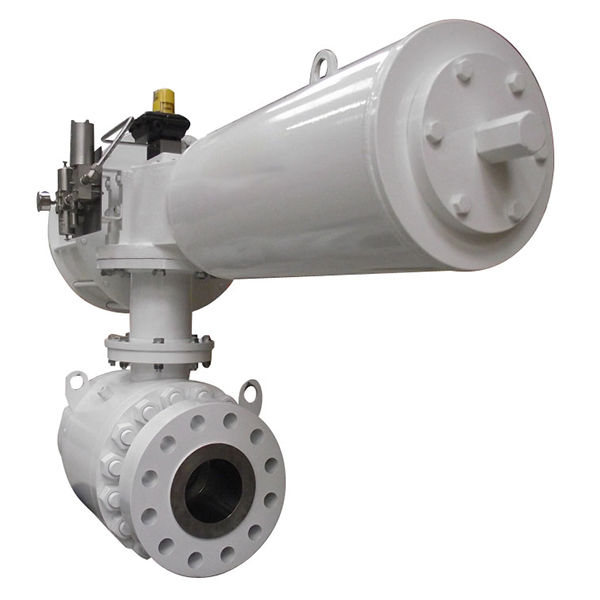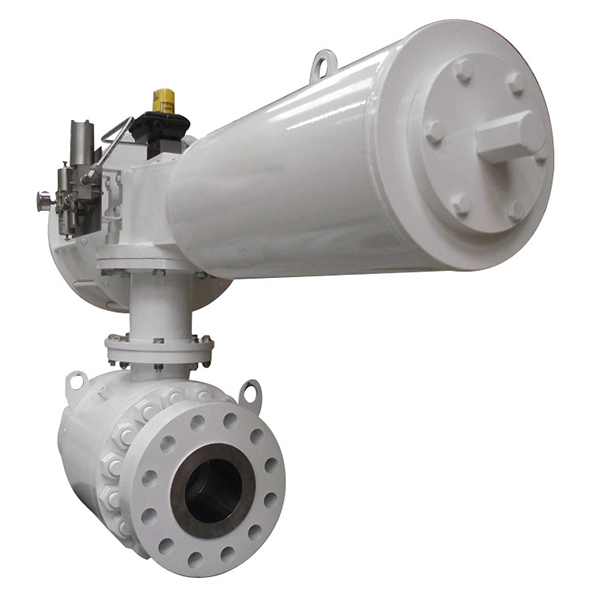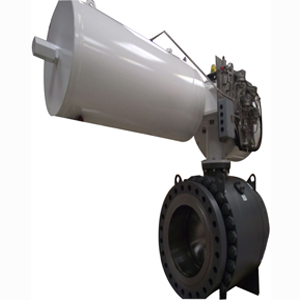 |
Pneumatic-hydraulic Ball Valve
API 6D Pipeline Valve
Pneumatic-hydraulic Ball Valve for Pipeline
Technical Parameters Installation Guide Model Description Download Document
Gas-hydraulic ball valves for long distance pipelines are widely used in long distance natural gas pipelines. They have the advantages of stable transmission, easy control and no power supply. PBV series gas-liquid ball valves for long distance pipelines are powered by high-pressure natural gas and are often used as line-cutting valves for gas pipelines.

Design features
Automatic cut-off function under abnormal working conditions;
A pressure upper and lower limit and a pressure drop speed are set respectively for the gas-liquid linkage ball valve.
Rate to meet operational needs. When the pipe pressure is above or below the pressure
The ball valve closes automatically within the time limit. If an explosion or rupture occurs in the pipeline,
When the detected pressure drop exceeds the set pressure drop rate, the valve will automatically close.
Multiple operating modes
Model PBV series has four types: manual, automatic, pneumatic and remote control.
Operating mode can be selected according to actual operating conditions.
To improve the safety and reliability of the valve. Manual mode, only need to change different
The switch operation can be realized by pressing the handle of the hand pump; pneumatic mode
The switch operation can be completed by pulling the operating handle in the direction of left turn-on and right turn-off.
It can be achieved by setting parameters with mobile media and activating automatic functions
Automatic control of valve. If the valve is equipped with remote control unit (RTu)
The remote control of the valve can be realized by remote transmission of the signal.
Gas-hydraulic ball valve uses high-pressure natural gas or hand pump as power source, without additional mechanical or electrical equipment, with low accident rate, safety and reliability, and good economy.
Working principle
 The gas-liquid linkage ball valve is mainly composed of VCONTORQUE #control box, gas-liquid tank, remote transmission terminal device, rotary rotor actuator, valve body, gas source tank, operation box, pressure pipes, test pipes and other components. The buried earth valve also has buried cavity vent pipe and so on.
The gas-liquid linkage ball valve is mainly composed of VCONTORQUE #control box, gas-liquid tank, remote transmission terminal device, rotary rotor actuator, valve body, gas source tank, operation box, pressure pipes, test pipes and other components. The buried earth valve also has buried cavity vent pipe and so on.
The air source of the gas-liquid linkage ball valve directly draws pressure from the trunk line and acts as the power source of the ball valve. Under normal working conditions, half-tank hydraulic oil is filled in the opening and closing tank, natural gas is filled in the gas source tank and the contrast tank, and the delay tank is empty. When the ball valve operates, the gas pushes oil and oil pushes the actuator to realize the opening and closing of the gas-liquid linkage ball valve. The VCONTORQUE actuator is divided into rotary blade type and fork type. Rotary blade type has rotors, immersed in hydraulic oil, gas-liquid tank to drive the rotors to rotate, the rotors drive the ball valves connected with it to realize the switch of the ball valves; dial fork type uses high-pressure natural gas in the pipeline to drive the reciprocating motion of the piston through hydraulic oil, and then through the dial fork into the rotary motion of the valve to drive. The ball valve connected with the ball valve rotates to realize the switch operation of the ball valve. There is a pneumatic switch handle in the operating box. The automatic control system compares the instantaneous pressure of the trunk line with the pressure in the comparing tank, determines the switch of the valve, and realizes the automatic control. Delay tank can delay valve action time and avoid instantaneous misoperation.
Product scope
Dimension: DN20 ~ DN800 (3/4"~32") Nominal Pressure: 150 ~ 2500LB
Flange Connection Standard: ANSI B16.5/EN1092-1:2001 Flange Spacing: API 6D ANSI B16.10
Leakage Class: ANSI B16.104VI Flow Characteristics: Quick Opening
Applicable Temperature: - 196~375 C
The last one:Trunnion-mounted Ball Valves
Next item:Pneumatic Ball Valve